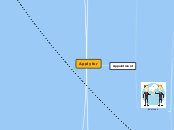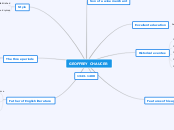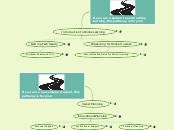Fighting HIV/AIDS
'Far and Beyon''
World History
historical vocabulary
vocab words: Westernization,
post-colonial, independence,
imperialism, colonize
current cultural customs & practices
during group work: play music from Botswana
traditional healing/medicine
diviners
current role of women &
gender dynamics
sexual assult &
domestic violence
grieving practices & customs
history of HIV/AIDS epidemic in Botswana
Overview of AIDs in Botswana:
http://www.avert.org/hiv-aids-botswana.htm
current situation of
HIV/AIDS in Botswana
videos of HIV positive
youth in Botswana &
youth programs
https://www.youtube.com/watch?v=akSEfrtbXVw
Resource:
Saturday is for Funerals
by Unity Dow
AIDS orphans &
epidemic impacts on
youth
history of Botswana, Africa
(colonial protectorate)
relationship to South Africa/
migration & settlement of the
Tswana people
gender inequality
& roles of women
school system
Westernization &
legacies of colonialism
post-colonial/independence
movements in sub-saharan Africa
Curriculum from
The Choices Program:
"Colonialism & African" unit
Part II: "African Resistance Grows"
("African Responses to Colonialism"
and "The Tide Begins to Turn"
Community Engagement
students make bi-lingual pamphlet
on HIV/AIDS facts & resources in
Spanish class (to present during
presentation)
World AIDS Day December 1st
student blog post
Youth Voices:
http://youthvoices.net/
students write about their
experience getting tested
Guest workshop in class &
student teach-in in advisory
Essential Questions of Unit
What are the most important public health strategies for addressing the HIV/AIDs epidemic in Botswana, Africa?
How can society (on a national and international level) provide quality care for all human beings, even in the face of crisis such as the AIDs epidemic?
Unit Overview:
While reading Unity Dow’s Far and Beyon’, students will use this text to identify and understand barriers and assets to health in the face of this epidemic specifically in Botswana, Africa. In learning about the spread of HIV/AIDs with a critical bioscience lens, students will analyze the ramifications of preventing and treating infectious diseases with public health in mind.
The final certification will be a PowerPoint presentation in which each student will perform the role of a public health professional who is presenting a proposal for strategies a new HIV clinic will implement. Given scarce resources, the clinic can only develop a few major strategies to address the epidemic. With the goal of modeling effective public health, our health care professionals will select one strategy from a list of frameworks to defend in front a panel of community members and stakeholders making the “budgetary decision.”
Enduring Understandings
A variety of strategies are being used to address global health crises (such as HIV/AIDS) with varying degrees of success. Students will be able to develop complex analysis of one public health strategy they argue is the most pivotal in curtailing the spread of HIV/AIDS:
I. Culture as Healing
II. Women’s Health
III. Youth Focus
IV. Men’s Health
V. Medical Research
VI. Education
English Language Arts
watch and analyze film Life, Above All
Novel: Far and Beyon'
by Unity Dow
public health vocabulary
Stanford Medical Youth Science Program: Public Health Advocacy Curriculum
assets, barriers,
(more TBD),
transmission
Setswana vocabulary
Motswana, Setswana,
Tswana, Botswana,
Batswana, diviner
Reading strategies
reading quizzes with critical
questions & reading comprehension
Reading packet
students identify
assets & barriers to health they
notice in each chapter
postcolonial "glasses"
to talk to text with post-
colonial criticism
guiding questions:
-What problems of identity are the characters struggling with? -How does the character(s) feel about their identity or position in society (their culture, language, religion, race, gender, class or family?)
-Are two worlds or cultures in conflict? Why? What does the conflict seem to be about?
-What forms of oppression or inequality are represented in this story? Who holds positions of power? What do you think he/she/they look like and where are they from? Who do you think is oppressed and what do you think he/she/they look like or where are they from?
-Who resists oppression or inequality? What do they do to resist? What about their identity makes their resistance especially important?
-What is the author’s attitude toward his/her characters? How do you think the author feels about the events or issues in the story?









